House of Saxe-Coburg and Gotha
HOUSE OF SAXE-COBURG AND GOTHA
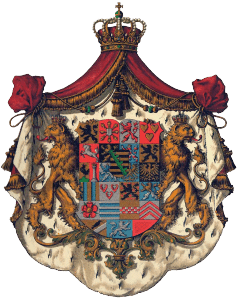
The House of Saxe-Coburg and Gotha (in German, Haus Sachsen Coburg und Gotha) is a German dynasty, in particular, the line of the Saxon House of Wettin that ruled the Ernestine duchies, including the duchy of Saxe-Coburg and Gotha.
Although the House of Coburg reaches back in history to the 1400s, we start our family tree in the latter half of the 18th century with Franz Friedrich Anton, the sixth Duke of Saxe-Coburg-Saalfeld (from 1826 on, the house was called Saxe-Coburg and Gotha). Through the first marriage of Ernst, Franz Anton’s eldest son, to Luise Princess of Saxe-Gotha-Altenburg, the house acquired considerably more territory and importance. The descendants of Franz Friedrich Anton were at the top of several European monarchies. Members of their successor families are currently heads of government in many countries: Belgium through the descendants of King Léopold I, and in the Commonwealth realm through the descendants of Prince Consort Albert. Due to anti-German sentiment in the United Kingdom during World War I, King George V of the United Kingdom and Ireland changed the name of his branch from “Saxe-Coburg and Gotha” to “Windsor” in 1917. The same happened in Belgium, where it became “van België” or “de Belgique.”
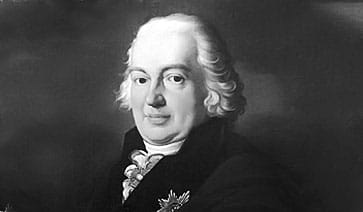
Franz Friedrich Anton
Duke of Saxe-Coburg-Saalfeld, Duke of Saxony (since 1800)
(Coburg, 15 July 1750 – Coburg, 9 December 1806)
Franz Friedrich Anton had to take over a practically ruined duchy. But he was a very talented man and – despite of his lack of money – started to collect engravings of the most excelling artists between the 15th and 18th century, thus founding the Coburg Collection of Graphics with its today’s 220.000 pieces of art. He is a patrilinear ancestor of Queen Elizabeth II of the United Kingdom of Great Britain and Northern Ireland, King Philippe of the Belgians and former tsar Simeon II (1943 – 1946 during the monarchy) and prime minister of Bulgaria (between 2001 and 2005).
Hereditary Prince of Saxe-Coburg-Saalfeld (till 1800)
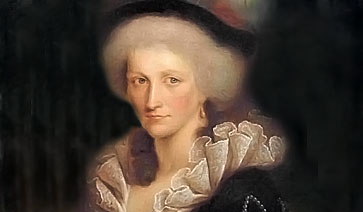
Auguste Karoline Sophie
Duchess of Saxe-Coburg-Saalfeld, Duchess of Saxony (since 1800)
(Saalburg-Ebersdorf, 19 January 1757 – Coburg, 16 November 1831)
Auguste had ten children, born between 1778 and 1792. One was stillborn and two died during their childhood. The other seven were married to European high nobility and these marriages were arranged under strong personal care. Auguste was the maternal grandmother of Queen Victoria of the United Kingdom and Ireland and the paternal grandmother of Albert, Prince Consort.
Princess Reuss
Princess of Ebersdorf
Princess of Saxe-Coburg-Saalfeld, Duchess of Saxony (since 1777)
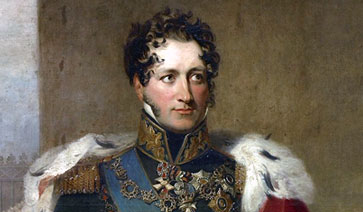
Ernst
Ernst I Duke of Saxe-Coburg and Gotha, Duke of Saxony (since 1826)
5(Coburg, 2 January 1784 – Gotha, 29 January 1844)
When Ernst (Ernst Anton Carl Ludwig) succeeded his father in 1806, Duke Ernst III’s country – Saxe-Coburg-Saalfeld – was under French control. Ernst already had to fight against Napoléon as a general of the Prussians. The peace of Tilsit in 1807 enabled the young duke to get back his territories, having the Russians on his side. His sister Juliane was married to Konstantin, the brother of Alexander I Tsar of Russia. After the Congress of Vienna and its hence resulting gain of territory which Ernst should sell to Prussia years later, he could achieve Gotha that belonged to the territory of his former wife. Now he became Duke of Saxe-Coburg and Gotha. He proved to be a patron of arts and sciences and the first German sovereign to rebuild castles in a romantic neo-Gothic style, embedded in parks of British landscape style. His younger brother Leopold (Georg Christian Friedrich) was later elected the first King of the Belgians.
Hereditary Prince of Saxe-Coburg-Saalfeld
Ernst III (last sovereign) Duke of Saxe-Coburg-Saalfeld, Duke of Saxony (since 1806)
The first Duke of Saxe-Coburg and Gotha was Ernst I, who ruled the duchy from 1826 until his death in 1844. He had previously been Duke of Saxe-Coburg-Saalfeld (as Ernst III) from 1806 until the duchy was reorganized in 1826. Ernst’s younger brother Léopold became King of the Belgians in 1831, and his descendants continue to serve as Belgian heads of state. Léopold’s only daughter, Princess Charlotte of Belgium, was the consort of Maximilian I of Mexico, known as the Empress Carlota of Mexico, in the 1860s. Ernst’s nephew Ferdinand married Queen Maria II of Portugal, and his descendants continued to rule Portugal until that country became a republic in 1910.
Duke Ernst I’s second son, Prince Albert (1819–1861), married Queen Victoria in 1840, and thus is the progenitor of the United Kingdom’s current royal family, called “Windsor” since 1917. In 1826, a cadet branch of the House of Saxe-Coburg and Gotha inherited the Hungarian princely estate of Koháry, and converted to Roman Catholicism. Its family members managed to marry an Imperial Princess of Brazil, an Archduchess of Austria, a Royal Princess of “the French,” a Royal Princess of Belgium and a Royal Princess of Saxony. [A scion of this branch, also named Ferdinand, a Prince, and then Tsar of Bulgaria, Ferdinand’s descendants continued to rule in Bulgaria until 1946. The current Head of the House of Bulgaria, the former Tsar Simeon II, was deposed and exiled during World War II, but returned to serve as Bulgaria’s Prime Minister from 2001 to 2005.
The Ducal House consisted of all male-line descendants of Franz Friedrich Anton, Duke of Saxe-Coburg-Saalfeld, legitimately born of an equal marriage, males and females (the latter until their marriage), their wives in equal and authorized marriages, and their widows until remarriage. According to the House law of the Duchy of Saxe-Coburg and Gotha, the full title of the Duke was:
Ernst, Duke of Saxe-Coburg and Gotha, Jülich, Cleves and Berg, also Angria and Westphalia, Landgrave in Thuringia, Margrave of Meissen, Princely Count of Henneberg, Count of the Mark and Ravensberg, Lord of Ravenstein and Tonna, et cetera.
Ernst I Duke of Saxe-Coburg and Gotha,
Duke of Saxony
Portrait of Ernst I Duke of Saxe-Coburg and Gotha

Ernst
Ernst I Duke of Saxe-Coburg and Gotha, Duke of Saxony (since 1826)
(Coburg, 2 January 1784 – Gotha, 29 January 1844)
When Ernst (Ernst Anton Carl Ludwig) succeeded his father in 1806, Duke Ernst III’s country – Saxe-Coburg-Saalfeld – was under French control. Ernst already had to fight against Napoléon as a general of the Prussians. The peace of Tilsit in 1807 enabled the young duke to get back his territories, having the Russians on his side. His sister Juliane was married to Konstantin, the brother of Alexander I Tsar of Russia. After the Congress of Vienna and its hence resulting gain of territory which Ernst should sell to Prussia years later, he could achieve Gotha that belonged to the territory of his former wife. Now he became Duke of Saxe-Coburg and Gotha. He proved to be a patron of arts and sciences and the first German sovereign to rebuild castles in a romantic neo-Gothic style, embedded in parks of British landscape style. His younger brother Leopold (Georg Christian Friedrich) was later elected the first King of the Belgians.
Hereditary Prince of Saxe-Coburg-Saalfeld
Ernst III (last sovereign) Duke of Saxe-Coburg-Saalfeld, Duke of Saxony (since 1806)
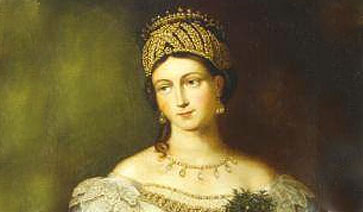
Luise
Duchess of Saxony (since 1826)
1(Gotha, 21 December 1800 – Paris, 30 August 1831)
Princess Luise (Dorothea Pauline Charlotte Fredericka Auguste) was the only daughter of Augustus, Duke of Saxe-Gotha-Altenburg and his first wife Louise Charlotte of Mecklenburg Schwerin, daughter of Friedrich Franz I, Grand Duke of Mecklenburg-Schwerin and Princess Louise of Saxe-Gotha-Altenburg. She was the first wife of Ernst I Duke of Saxe-Coburg-Saalfeld and the mother of Duke Ernst II and Prince Albert, husband of Queen Victoria.
Princess of Saxe-Gotha-Altenburg
Duchess of Saxe-Coburg-Saalfeld, Duchess of Saxony (1817 – 1826)
Issue:
Ernst II Duke of Saxe-Coburg and Gotha, Duke of Saxony
Albert Prince Consort of the United Kingdom
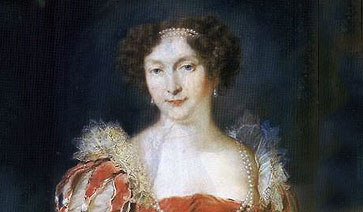
Marie
Duchess of Saxe-Coburg and Gotha, Duchess of Saxony (since 1832)
2(Coburg, 17 September 1799 – Gotha, 24 September 1860)
Marie (Antoinette Friederike Auguste Anna) was a daughter of Alexander Duke of Wurttemberg and Antoinette Princess of Saxe-Coburg-Saalfeld. She spent several years of her childhood in Russia, but always felt like a German princess and was greatly influenced by her grandmother Auguste. When she married Ernst I, her uncle, she became Duchess of Saxe-Coburg and Gotha. She never had her own children, but was a well-meaning stepmother to Duke Ernst II and Prince Albert.
Princess of Württemberg
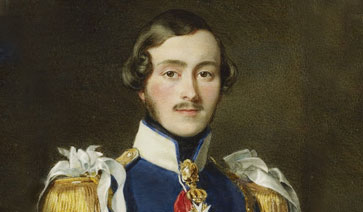
Ernst
Ernst II Duke of Saxe-Coburg and Gotha, Duke of Saxony (since 1844)
1(Coburg, 21 June 1818 – Reinhardsbrunn near Gotha, 22 August 1893)
Ernst was the first son of Ernst I. The education of Duke Ernst II (Ernst August Karl Johann Léopold Alexander Eduard) was influenced by his uncle Léopold I, King of the Belgians. After the revolution of 1848 he achieved liberal reform, and a common constitution for the two duchies. He was instrumental in founding the predecessor of today’s Social Democratic Party, and was the patron of a sport-shooting association, gymnastic tournaments, and singing competitions that still exist today. He was especially fond of theatre and admired Richard Wagner, even composing an opera of his own.
Hereditary Prince of Saxe-Coburg and Gotha
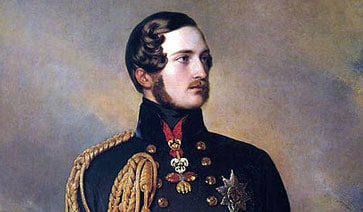
Albert
Prince Consort of the United Kingdom (since 1840)
2(Rosenau Castle near Coburg, 26 August 1819 – Windsor Castle, Berkshire, England, 14 December 1861)
The education of Prince Albert (Francis Albert Augustus Charles Emmanuel; later The Prince Consort) was scrutinized by his uncle, King Léopold I of the Belgians, who also arranged his marriage at age 20 to his first cousin, Queen Victoria of the United Kingdom and Ireland. The couple would ultimately have nine children. He would become the most important adviser to the Queen, with a strong commitment to social responsibility and a keen interest in science. He originated the first World Exposition in 1851 in London.
Prince of Saxe-Coburg and Gotha, Duke of Saxony
Ernst II, Duke of Saxe-Coburg and Gotha,
Duke of Saxony
A lithograph of Ernst II, 1842

Ernst
Ernst II Duke of Saxe-Coburg and Gotha, Duke of Saxony (since 1844)
(Coburg, 21 June 1818 – Reinhardsbrunn near Gotha, 22 August 1893)
Ernst was the first son of Ernst I. The education of Duke Ernst II (Ernst August Karl Johann Léopold Alexander Eduard) was influenced by his uncle Léopold I, King of the Belgians. After the revolution of 1848 he achieved liberal reform, and a common constitution for the two duchies. He was instrumental in founding the predecessor of today’s Social Democratic Party, and was the patron of a sport-shooting association, gymnastic tournaments, and singing competitions and very fond of theatre playing. He was especially fond of theatre and admired Richard Wagner, even composing an opera of his own.
Hereditary Prince of Saxe-Coburg and Gotha
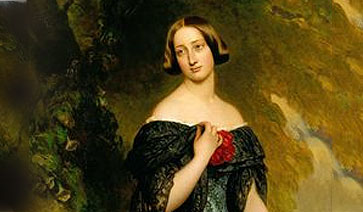
Alexandrine
Duchess of Saxe-Coburg and Gotha, Duchess of Saxony (since 1844)
(Karlsruhe, 6 December 1820 – Callenberg Castle near Coburg, 20 December 1904)
Alexandrine of Baden (Alexandrine Luise Amalie Friederike Elisabeth Sophie) was the eldest child of Léopold, Grand Duke of Baden (1790–1852) and his wife Sophie, who was a daughter of the Swedish King Gustav IV Wasa. The Princess Alexandrine and the Hereditary Prince of Saxe-Coburg and Gotha were married in 1842. Alexandrine’s charitable activities and her empathetic personality are recognized today in the “Alexandrinum” grammar school and the “Ernst-Alexandrine Bath House.” To commemorate her husband, she had a monument erected in the Court Gardens in the British style.
Princess of Baden
Princess of Saxe-Coburg and Gotha (since 1842)
Inheritance to Saxe-Coburg and Gotha
The heir apparent of Duke Ernst II: Prince Alfred, Duke of Edinburgh
For many years of Ernst’s ducal reign, his brother Albert, Prince Consort of Queen Victoria, was the heir apparent to the duchies Saxe-Coburg and Gotha. Ernst and his wife remained childless and after the early death of his brother Albert in 1861, it became clear that a British Prince would be the heir apparent (the eldest son of Albert). A personal union between the duchies and the United Kingdom was possible but not desirable. When the Prince of Wales renounced his succession rights to the German duchies, a combination of constitutional clauses and renunciations were made to avoid the personal union, and to have Ernst’s throne pass to the next son of Albert. Consequently, Alfred, Duke of Edinburgh, the second eldest son of Prince Albert, was designated the childless Ernst’s heir apparent on 14 December 1861.
It would have been customary for Duke Ernst, the head of the Coburg family during his lifetime, to dictate the guidelines of his successor’s education and upbringing. However, Alfred’s parents Queen Victoria and The Prince Consort disapproved of this idea. First of all, Alfred was a British prince and second in line to the crown of the British Empire, before being the heir apparent of a German duchy. Though the British succession changed in 1864 with the birth of Prince Albert Victor, Duke of Clarence and Avondale, the first son of Albert Edward, Prince of Wales, there remained differences in educational objectives between Albert and his brother Ernst. It was common for a British prince to pursue a career in the Navy but this was quite unnecessary for the heir apparent of a German dukedom situated far from the sea. In 1856, it was decided that Alfred should join the Royal Navy where he rose to Admiral of the Fleet in 1893. After sailing and crossing the seven seas, and upon the death of his German uncle, he was not very enthusiastic about becoming the Duke of Saxe-Coburg and Gotha.
Alfred, Duke of Saxe-Coburg and Gotha
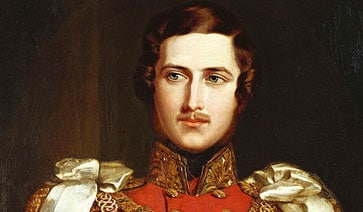
Albert
Prince Consort of the United Kingdom (since 1840)
(Rosenau Castle near Coburg, 26 August 1819 – Windsor Castle, Berkshire, England, 14 December 1861)
The education of Prince Albert (Francis Albert Augustus Charles Emmanuel; later The Prince Consort) was scrutinized by his uncle, King Léopold I of the Belgians, who also arranged his marriage at age 20 to his first cousin, Queen Victoria of the United Kingdom and Ireland. The couple would ultimately have nine children. He would become the most important adviser to the Queen, with a strong commitment to social responsibility and a keen interest in science. He originated the first World Exposition in 1851 in London.
Prince of Saxe-Coburg and Gotha, Duke of Saxony
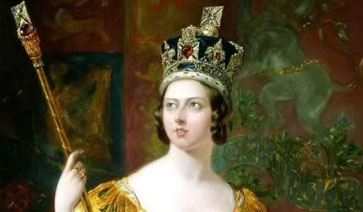
Victoria
Queen of the United Kingdom (since 1837)
Empress of India (since 1876)
(Kensington Palace, London, 24 May 1819 – Osborne House, Isle of Wight, 22 January 1901)
Victoria (Alexandrina Victoria) was the daughter of Victoria Princess of Saxe-Coburg-Saalfeld and Prince Edward, Duke of Kent and Strathearn, son of King George III. King George III died the year after Victoria was born, and she was therefore raised under her mother’s influence. Because her father’s three older brothers died without legitimate heirs, Victoria inherited the British throne. Her reign,”The Victorian Era,” lasted for more than 63 years. It was a time of great industrial, cultural, and scientific changes that had a profound effect on politics and the military.
Heiress apparent of the United Kingdom (since 1830)
Queen of the United Kingdom of Great Britain and Ireland (since 1837)
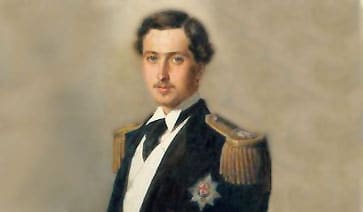
Alfred
Duke of Saxe-Coburg and Gotha, Duke of Saxony (since 1893)
4(Windsor Castle, Berkshire, England, 6 August 1844 – Rosenau Castle near Coburg, 30 July 1900)
Alfred (Ernest Albert) spent many years of his lifetime sailing across the sea as an officer of the Royal Navy, achieving the title of “Admiral of the Fleet” – until he succeeded his paternal uncle Ernst II as the reigning Duke of Saxe-Coburg and Gotha in the German Empire. He was an amateur collector of glass and ceramic ware that can be seen at the art collections of the Veste Coburg. (KG, KT, KP, GCB, GCSI, GCMG, GCIE, GCVO, PC)
Prince of the United Kingdom, Earl of Ulster, Earl of Kent
Duke of Edinburgh (since 1866)
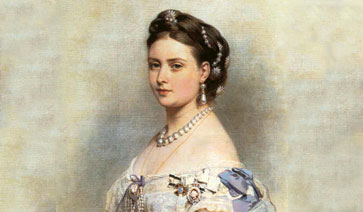
Victoria
The Empress Frederich (since 1888)
1(Buckingham Palace, London, 21 November 1840 – Friedrichshof Castle, Kronberg, Taunus, Germany, 5 August 1901)
Victoria (Victoria Adelaide Mary Louisa) was created Princess Royal in 1841 because she was the first child. Her education was closely supervised by her parents: she learned German and French and was highly educated in science, literature, Latin, history, politics, and philosophy. To her family she was known simply as “Vicky.” At the age of 17 she married Prince Friedrich who became the Crown Prince of Prussia. Victoria was then known as Her Imperial Majesty the Empress Friedrich.
Princess of the United Kingdom
The Princess Royal (since 1841) of the United Kingdom
Princess of Saxe-Coburg and Gotha, Duchess of Saxony
Crown Princess of Prussia (since 1861)
Queen of Prussia and German Empress (since 1888)
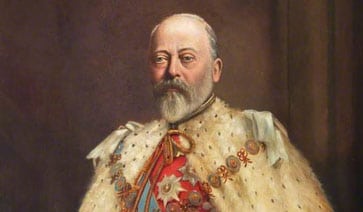
Edward
Edward VII King of the United Kingdom, King of the British Dominions
Emperor of India (since 1901)
2
(Buckingham Palace, London, 9 November 1841 – Buckingham Palace, 6 May 1910)
Because of the long reign of his mother, Queen Victoria, Edward was excluded from taking an active part in politics. Before his accession to the throne, he served as heir apparent and held the title of Prince of Wales for longer than any of his predecessors. He also had the titles of Prince of Saxe-Coburg and Gotha and Duke of Saxony, but renounced the succession rights to the German Duchy in 1863. In October 1875 he toured India for eight months and wrote home about the poor treatment the native Indians were getting from the British officials. Due in part to the success of his tour, the title Empress of India was given to his mother.
Prince of the United Kingdom
Prince of Wales, Earl of Chester (since 1841)
Duke of Cornwall, Duke of Rothesay
Hereditary Prince of the United Kingdom
Earl of Dublin (since 1850)
Edward VII King of the United Kingdom
Prince of Saxe-Coburg and Gotha, Duke of Saxony
King of the British Dominions
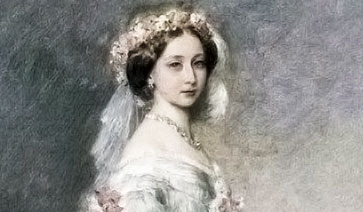
Alice
Grand Duchess of Hesse and by Rhine (since 1877)
3(Buckingham Palace, London, 25 April 1843 – Darmstadt, Hesse, 14 December 1878)
Alice (Alice Maud Mary) Princess of Great Britain and Ireland was very compassionate. She took care of her dying grandmother and father and was a comfort to her mourning mother, Queen Victoria who was in great distress by the early death of her husband, Albert. When Alice married Prince Louis of Hesse, she was given away by her father’s brother, Ernst II., Duke of Saxe-Coburg and Gotha. She had seven children, one of them Alexandra Feodorovna became the Tsarina of Russia. Alice is the the last Viceroy of India, maternal great-grandmother of Prince Philip, Duke of Edinburgh and Consort of Queen Elisabeth II.
Princess of the United Kingdom
Princess of Saxe-Coburg and Gotha, Duchess of Saxony
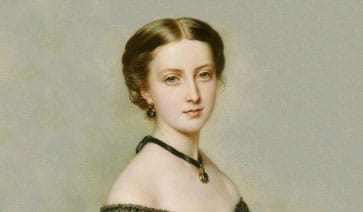
Helena
Princess Christian (since 1917)
5(Buckingham Palace, London, 25 May 1846 – Schomberg House, London, 9 June 1923)
Helena (Helena Augusta Victoria) was allowed to marry Prince Christian of Schleswig-Holstein, only because the couple agreed to live in Buckingham Palace near her mother, Queen Victoria. Her husband was fifteen years older than Helena and from a non-wealthy family compared to the British monarchy. Helena served as her mother’s private secretary and was very engaged in representing the royals in public affairs. She was one of the founding members of the Red Cross in Britain. When King George V dropped all the German styles and titles in 1917, she became Princess Christian.
Princess of the United Kingdom
Princess Christian of Schleswig-Holstein (since 1866)
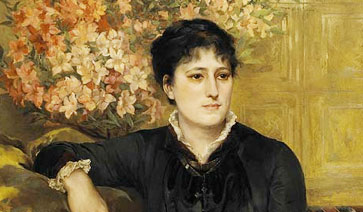
Louise
Duchess of Argyll (since 1900)
6(Buckingham Palace, London, 18 March 1848 – Kensington Palace, London, 3 December 1939)
Louise (Louise Caroline Alberta) was named after her grandmother in her honour. She was said to be the most beautiful and the most talented of the Queen’s daughters. She fell in love with John, Marquess of Lorne and heir to the Duke of Argyll. Until her marriage in 1871, she was a secretary to Queen Victoria, who did not want to let her go. In opposition to her mother, she supported liberal ideals and the feminist movement. In 1878 her husband was appointed Governor General of Canada and she became Vice Regal Consort. The couple remained childless.
Princess of the United Kingdom (since 1848)
Princess of Saxe-Coburg and Gotha, Duchess of Saxony
Marchioness of Lorne (1871 – 1900)
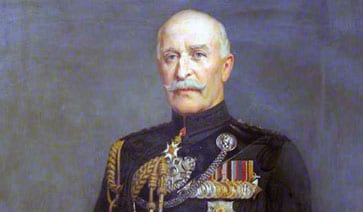
Arthur
1st Duke of Connaught and Strathearn, Earl of Sussex (since 1874)
7(Buckingham Palace, London, 1 May 1850 – Bagshot Park, Surrey, England, 16 January 1942)
Prince Arthur (Arthur William Patrick Albert) was the third son of Queen Victoria and Prince Albert of Saxe-Coburg and Gotha. He was granted the title of the 1st Duke of Connaught and Strathearn (named after a province of Ireland) by the Queen of the United Kingdom of Great Britain and Ireland. Arthur was educated by private tutors before entering the Royal Military Academy, Woolwich at the age of 16. He served in the British Army for some 40 years where he performed military as well as royal duties in different countries. His nephew, King George V, appointed him Governor General of Canada in 1911, where he served as Viceroy until 1916, the tenth since the Canadian Confederation. (KG, KT, KP, GCMG, GCSI, GCIE, GCVO, GCB, GBE, PC)
Prince of the United Kingdom
Prince of Saxe-Coburg and Gotha, Duke of Saxony
The Prince Arthur (1850 – 1874)
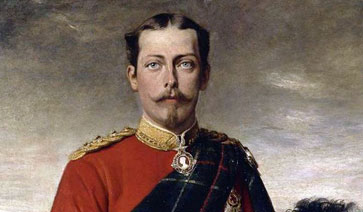
Leopold
Duke of Albany, Earl of Clarence, Baron Arklow (since 1881)
8(Buckingham Palace, London, 7 April 1853 – Cannes, France, 28 March 1884)
Prince Leopold (Leopold George Duncan Albert) was named after his grand-uncle, King Léopold I of the Belgians. He suffered from haemophilia, which he inherited from his mother, and was thus incapable of pursuing a military career and became a patron of the arts and literature. He died at the age of 30 from his disease, before the birth of his son, Prince Charles Edward, Duke of Albany, who succeeded as reigning Duke of Saxe-Coburg and Gotha in 1900. Charles Edward was deprived of his British peerage, in 1917 by King George V for bearing arms against the United Kingdom in World War I. Through Charles Edward, the maternal grandfather; Leopold is the great-grandfather of Carl XVI Gustaf, the current King of Sweden. (KG, KT, GCStJ, GCMG, GCSI)
Prince of United Kingdom
Prince of Saxe-Coburg and Gotha, Duke of Saxony
The Prince Leopold (1853 – 1881)
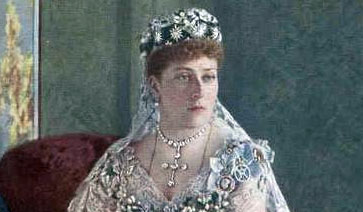
Beatrice
Princess Henry (1917 – 1944)
9(Buckingham Palace, London, 14 April 1857 – Brantridge Park, Sussex, 26 October 1944)
Princess Beatrice (Beatrice Mary Victoria Fedora) succeeded her sisters Alice, Helena, and Louise in being a close companion and secretary to her mother. She was the youngest and the last of Queen Victoria’s children to die, 66 years after her sister Alice. Queen Victoria agreed to her marriage with Henry, Prince of Battenberg, but only on condition that Beatrice and Henry would make their home with her and that Beatrice would continue her duties. To compensate Henry for giving up his German commitments in order to stay with his wife, the Queen made him Governor of the Isle of Wight in 1889. He died of Malaria seven years later. After his death, Queen Victoria made Beatrice governor (1896 – 1944). The couple had four children. King Juan Carlos of Spain is their great-grandson. After the death of her mother, Beatrice devoted the next 30 years to editing Queen Victoria’s journals as her designated literary executor and continued to make public appearances.
Princess of the United Kingdom
Princess of Saxe-Coburg and Gotha, Duchess of Saxony
The Princess Beatrice (1857 – 1885)
Princess Henry of Battenberg (1885 – 1917)
Duke Alfred was chosen to succeed King Otto of Greece in 1862, but could not accept because the Queen opposed the idea and wanted him to succeed to the Duchy of Saxe-Coburg. Alfred remained in the Navy, where he was appointed to the command of the frigate HMS Galatea and traveled most of his life to countries including India, Australia, New Zealand, and Japan. On August 22, 1893, the duchy fell to Alfred. This was not a happy event for him, because it required him to surrender his seat in the House of Lords and the Privy Councel to take over his territories in continental Europe. During this time he lost his son, then died a few months later. He was succeeded as the Duke of Saxe-Coburg and Gotha by his nephew, Prince Charles Edward, Duke of Albany, the posthumous son of his youngest brother Prince Léopold, Duke of Albany because Alfred’s next brother, the Duke of Connaught, and his son, Prince Arthur of Connaught, had renounced their succession rights to the Duchy of Saxe-Coburg and Gotha.
Duke Alfred’s Family
Photograph of Prince Alfred, Duke of Edinburgh, dressed in military uniform decorated with insignias and medals including the chain of the Order of the Garter for the wedding of the Duke and Duchess of York

Alfred
Duke of Saxe-Coburg and Gotha, Duke of Saxony (since 1893)
(Windsor Castle, Berkshire, England, 6 August 1844 – Rosenau Castle near Coburg, 30 July 1900)
Alfred (Alfred Ernest Albert) spent much of his life sailing the seas as an officer of the Royal Navy, achieving the title of “Admiral of the Fleet” – until he succeeded his paternal uncle Ernst II as the reigning Duke of Saxe-Coburg and Gotha in the German Empire. He was an amateur collector of Venetian and other historical glass pieces that can be seen at the art collections of the Veste Coburg. (KG, KT, KP, GCB, GCSI, GCMG, GCIE, GCVO, PC)
Prince of the United Kingdom, Earl of Ulster, Earl of Kent
Prince of Saxe-Coburg and Gotha, Duke of Saxony
Duke of Edinburgh (since 1866)
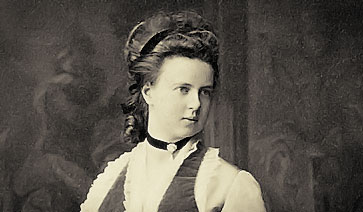
Marija Alexandrowna
The Dowager Duchess of Saxe-Coburg and Gotha (since 1905)
(Tsarskoye Selo, north-western Russia, 17 October 1853 – Zurich, Switzerland, 24 October 1920)
Marija Alexandrowna was one of the daughters of Alexander II of Russia and Empress Marija Alexandrowna. She married Prince Alfred, Duke of Edinburgh, the second son of Queen Victoria and Prince Albert. Maria was the mother of Queen Marie of Romania and an aunt of Tsar Nicholas II. From 1893 until her death, she had the distinction of being a Russian Grand Duchess (by birth), a British Princess and Royal Duchess (by marriage), and the Consort (and later widow) of a German sovereign Duke.
Grand Duchess of Russia
Duchess of Edinburgh (since 1874)
Duchess of Saxe-Coburg and Gotha, Duchess of Saxony (since 1893)
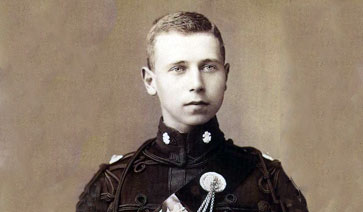
Alfred
Hereditary Prince of Saxe-Coburg and Gotha, Duke of Saxony
1(Buckingham Palace, London, 15 October 1874 – Meran, (Austria-Hungary), today: Italy, 6 February 1899)
Alfred (Alfred Alexander William Ernest Albert), born Prince Alfred of Edinburgh, was the only son and heir apparent of Prince Alfred, Duke of Edinburgh, later Duke of Saxe-Coburg and Gotha. Alfred died on 6 February 1899 at the ageof 24. The same year he died, Alfred’s uncle the Duke of Connaught and his son Prince Arthur of Connaught renounced their succession rights to the Duchy of Saxe-Coburg and Gotha. As a result his first cousin Prince Charles Edward, Duke of Albany, became heir apparent.
Prince of the United Kingdom
Prince of Edinburgh
Prince of Saxe-Coburg and Gotha, Duke of Saxony
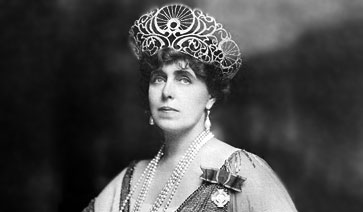
Marie
Queen Consort of Romania (since 1914)
2(Eastwell Park, Kent, 29 October 1875 – Peles Castle, Sinaia, Romania, 18 July 1938)
In 1893, Marie (Marie Alexandra Victoria) married Ferdinand of Romania (1865–1927), who later became King Ferdinand I (1914–1927). The couple had six children. Their oldest son, heir apparent Carol (1893–1953) later became King Carol II (1930– 1940) and is King Michael’s father. Their first daughter, Princess Elisabeta (1894–1956), became Queen of Greece; and second daughter Princess Marie (1900–1961) became Queen of Yugoslavia and mother of King Peter II of Yugoslavia. Prince Nicholas followed in 1903 and died 1978; Princess Ileana in 1909 and died 1991. The youngest son, Prince Mircea was born in 1913 but only lived three years.
Princess of the United Kingdom
Princess of Edinburgh
Princess of Saxe-Coburg and Gotha, Duchess of Saxony
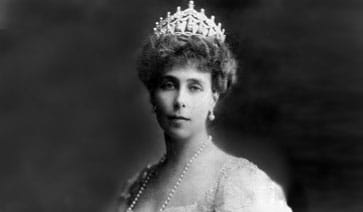
Victoria Melita
Grand Duchess Victoria Feodorovna of Russia
3(San Antonio Palace, Malta, 25 November 1876 – Amorbach, Germany, 2 March 1936)
Victoria Melita married in 1894 the son of her aunt Alice, Ernst Louis (1862 – 1937), Grand Duke of Hesse (1892–1918). They had two children, the daughter Princess Elisabeth (1895–1903) and a stillborn son in 1901, the year in which the couple got divorced. In 1905 she married her first cousin Grand Duke Cyril Vladimirovich of Russia (1876–1938), with whom she had three children, two daughters, Princess Maria Kirillovna (1907–1951) and Princess Kira Kirillovna (1909–1967) and one son, Prince Vladimir Kirillovich (1917–1992). Victoria Melita was a granddaughter of Queen Victoria as well as of Tsar Alexander II of Russia.
Princess of the United Kingdom
Princess of Edinburgh
Princess of Saxe-Coburg and Gotha, Duchess of Saxony
Grand Duchess of Hesse
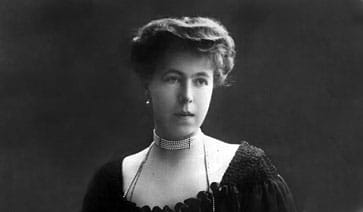
Alexandra
The Princess of Hohenlohe-Langenburg (since 1913)
4(Rosenau Castle, near Coburg, 1 September 1878 – Schwäbisch-Hall, Germany, 16 April 1942)
In 1896, Princess Alexandra (Alexandra Louise Olga Victoria) married a grand-nephew of Queen Victoria, Prince Ernst II of Hohenlohe-Langenburg (1863–1950). [He worked in the German foreign office, and assisted his father in governing the then-German Alsace-Lorraine region, from 1894 to 1907. From 1900 to 1905 he acted as regent for his wife’s cousin, Charles Eduard, Duke of Albany and presumptive heir to the Dukedom of Saxe-Coburg and Gotha. From 1907 to 1911, he was a member of the German Parliament and served as a vice president. He succeeded his father as Prince of Hohenlohe-Langenburg and served the German government in diplomatic and military aspects during the First World War. His eldest son Gottfried married Princess Margarita of Greece and Denmark, the sister of Prince Philip, Duke of Edinburgh.
Princess of the United Kingdom
Princess of Edinburgh
Princess of Saxe-Coburg and Gotha, Duchess of Saxony
The Hereditary Princess of Hohenlohe-Langenburg (since 1996)
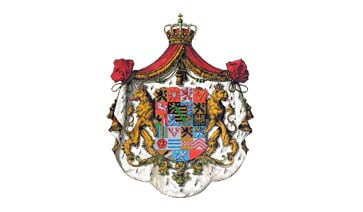
Stillborn Son
5This child was born 13 October 1879.
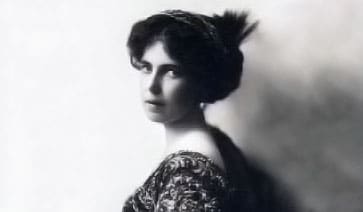
Beatrice
Princess Alfonso de Orleans y Borbón (since 1937)
6(Eastwell Park, Kent, 20 April 1884 – El Botánico, Sanlúcar de Barrameda, Spain, 13 July 1966)
Princess Beatrice (Beatrice Léopoldine Victoria) married Prince Alfonso de Orléans y Borbón, 5th Duke of Galliera, over the objections of the Spanish government. The coupled was forced to live in exile because the bride would not agree to convert to Roman Catholicism. They stayed in Coburg until 1912, when they were officially allowed to live in Spain and Alfonso’s title of Infante was restored.
Princess of the United Kingdom
Princess of Edinburgh
Princess of Saxe-Coburg and Gotha, Duchess of Saxony
Princess Alfonso de Orleans y Borbón (1909 – 1930)
The Duchess of Galliera (1930 –1937)
Alfred Prince of Edinburgh died on 6 February 1899 at the age of 24. He was buried in the Ducal Mausoleum of the Glockenberg Cemetery, Coburg, Germany. In 1899 Alfred’s uncle the Duke of Connaught and his son Prince Arthur of Connaught renounced their succession rights to the Duchy of Saxe-Coburg and Gotha. As a result, Alfred’s first cousin Prince Charles Edward, Duke of Albany, became presumptive heir.
Succeeded to
Charles Edward, Duke of Saxe-Coburg and Gotha, Duke of Saxony
Prince Leopold Duke of Albany
Leopold
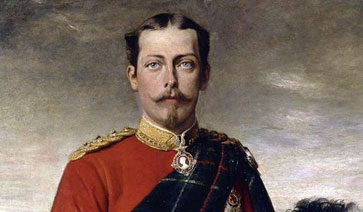
Leopold
Duke of Albany, Earl of Clarence, Baron Arklow (since 1881)
(Buckingham Palace, London, 7 April 1853 – Cannes, France, 28 March 1884)
Prince Leopold (Leopold George Duncan Albert) was named after his grand-uncle, King Leopold I of the Belgians. He suffered from haemophilia, which he inherited from his mother, and was thus incapable of pursuing a military career and became a patron of the arts and literature. He died at the age of 30 from his disease, before the birth of his son, Prince Charles Edward, Duke of Albany, who succeeded as reigning Duke of Saxe-Coburg and Gotha in 1900. Charles Edward was deprived of his British peerage in 1917 by King George V for bearing arms against the United Kingdom in World War I. Through Charles Edward, the maternal grandfather, Leopold is the great-grandfather of Carl XVI Gustaf, the current King of Sweden. (KG, KT, GCStJ, GCMG, GCSI)
Prince of the United Kingdom
Prince of Saxe-Coburg and Gotha, Duke of Saxony
Prince Léopold (1853 – 1881)
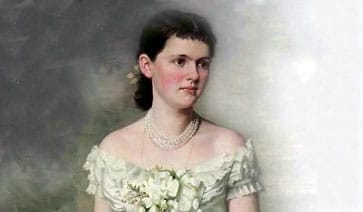
Helena
The Duchess of Albany (till 1922)
(Arolsen, Waldeck and Pyrmont, 17 February 1861 – Tyrol, Austria, 1 September 1922)
Princess Helena (Helene Friederike Auguste) was the daughter of George Victor, Prince of Waldeck and Pyrmont (regions in Germany) and his wife Princess Helena of Nassau (Germany). In 1882, Helena married the youngest son of Queen Victoria, Léopold Duke of Albany. At the time of Léopold’s early death, she was pregnant with her second child. She was engaged in hospital charities, as well as education and employment projects for women and girls. Her son Charles Edward would become the new heir to the Duchy of Saxe-Coburg and Gotha. Through him she is the great-grandmother of Carl XVI Gustaf, the King of Sweden. (CI, VA, RRC, DJStJ)
Princess of Waldeck and Pyrmont (till 1882)
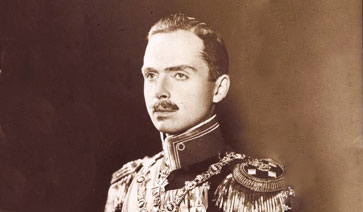
Charles Edward
Duke of Saxe-Coburg and Gotha, Duke of Saxony (1905 – 1918)
2(Claremont House, Surrey, 19 July 1884 – Coburg, Germany, 6 March 1954)
Charles Edward (Leopold Charles Edward George Albert) was – from 30 July 1900 to 14 November 1918 – the fourth and last reigning Duke of Saxe-Coburg and Gotha, the two duchies in Germany. He was to become the heir of the duchies when his uncle Alfred died in 1900, as Alfred’s only son had died one year before his father and the Duke of Connaught and his son had already renounced their claims to the duchy. At the age of 16, Charles Edward reigned for five years through the regency of Ernst, Hereditary Prince of Hohenlohe-Langenburg, and the husband of Duke Alfred’s daughter Alexandra. When Charles Edward took office, he used one building in the Veste Coburg and had it tailored to the needs of his family as their winter residence. The implications of World War I, in which he had to fight against his homeland, caused him pain and inner conflict.
In the German revolution of 1918, like all other German royals, Charles Edward was forced to abdicate. He lost his British peerages in 1919 according to the “Titles Deprivation Act of 1917.” He was the head of the House of Saxe-Coburg and Gotha from 1900 until his death in 1954. Through his daughter Sybille, Charles Edward is the maternal grandfather of Carl XVI Gustaf, King of Sweden. (KG, GCVO)
Prince of the United Kingdom (unitl 1919)
Duke of Albany, Earl of Clarence, Baron of Arklow (till 1919)
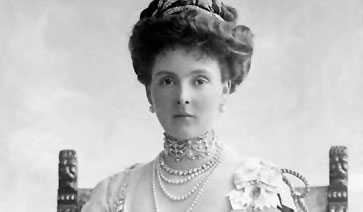
Alice
Countess to Athlone (1917 – 1981)
1(Windsor Castle, Berkshire, 25 February 1883 – Kensington Palace, London, 3 January 1981)
Alice (Alice Mary Victoria Augusta Pauline) married a cousin, Prince Alexander of Teck, in 1904, the brother of the later Queen Mary, Consort of George V. He was a British military commander and was appointed by the King to be the Governor General of the Union of South Africa, where he served from 1923 to 1931. He later served as a Governor General of Canada from 1940 to 1946. Alice accompanied and supported her husband during the Quebec Conferences with allies Prime Minister M. King, W. Churchill, and F. D. Roosevelt, where they discussed their common strategy against Germany and Japan. When Alice died at the age of 98, she was the longest-living British Princess of royal blood and had lived through six reigns, from her grandmother Queen Victoria to her great-niece Queen Elizabeth II. (VA, GCStJ, GCVO, GBE)
Princess of Albany
Princess of Saxe-Coburg and Gotha, Duchess of Saxony
Princess Alexander of Teck (1904 – 1917)
Duke Charles Edward’s Family
Family Portrait

Charles Edward
Duke of Saxe-Coburg and Gotha, Duke of Saxony (1905 – 1918)
(Claremont House, Surrey, 19 July 1884 – Coburg, Germany, 6 March 1954)
Charles Edward (Leopold Charles Edward George Albert) was – from 30 July 1900 to 14 November 1918 – the fourth and last reigning Duke of Saxe-Coburg and Gotha, the two duchies in Germany. He was to become the heir of the duchies when his uncle Alfred died in 1900, as Alfred’s only son had died one year before his father and the Duke of Connaught and his son had already renounced their claims to the duchy. At the age of 16, Charles Edward reigned for five years through the regency of Ernst, Hereditary Prince of Hohenlohe-Langenburg, and the husband of Duke Alfred’s daughter Alexandra. When Charles Edward took office, he used one building in the Veste Coburg and had it tailored to the needs of his family as their winter residence. The implications of World War I, in which he had to fight against his homeland, caused him pain and inner conflict.
In the German revolution of 1918, like all other German royals, Charles Edward was forced to abdicate. He lost his British peerages in 1919 according to the “Titles Deprivation Act of 1917.” He was the head of the House of Saxe-Coburg and Gotha from 1900 until his death in 1954. Through his daughter Sybille, Charles Edward is the maternal grandfather of Carl XVI Gustaf, King of Sweden. (KG, GCVO)
Prince of the United Kingdom (until 1919)
Duke of Albany, Earl of Clarence, Baron of Arklow (till 1919)
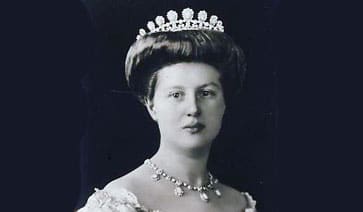
Viktoria Adelheid
Duchess of Saxe-Coburg and Gotha, Duchess of Saxony (1905 – 1918)
(Grünholz, Schleswig-Holstein, 31 December 1885 – Greinburg, Austria, 3 October 1970)
Princess Viktoria Adelheid (Viktoria Adelheid Helene Luise Marie Friederike) was born at Grünholz Manor in Schleswig-Holstein, Prussia as the eldest daughter of Friedrich Ferdinand, Duke of Schleswig-Holstein-Sonderburg-Glücksburg and his wife Princess Karoline Mathilde of Schleswig-Holstein-Sonderburg-Augustenburg. Viktoria’s father was a nephew of King Christian IX of Denmark. In 1905 Viktoria married Charles Edward, Duke of Saxe-Coburg and Gotha, who was forced to abdicate in 1918. After World War II, the family lost its properties in and around Gotha, in the eastern part of Germany. They lived part time in Coburg, and in Greinburg, a castle in Grein, Austria belonging to the family since 1823. Even after the abolition of titles in Germany, Viktoria was always called “Frau Herzogin” (Duchess) and was highly respected and well liked by the citizens.
Princess Adelheid of Schleswig-Holstein-Sonderburg-Glücksburg (till 1905)
Duchess of Albany (till 1919)
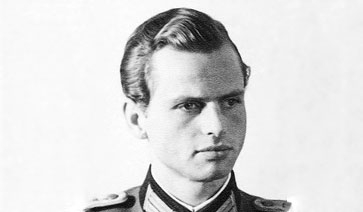
Friedrich Josias
Heir apparent of Saxe-Coburg and Gotha, Duke of Saxony (since 1943)
5(Callenberg Castle, near Coburg, 29 November 1918 – Amstetten, Austria, 23 January 1998)
The third of three sons, Friedrich Josias (Friedrich Josias Carl Eduard Ernst Kyrill Harald) was not expected to succeed as head of the Ducal Family. However, his eldest brother, Hereditary Prince Johann Léopold, gave up his rights in 1932 because of his unequal marriage, and the second brother Prince Hubertus was killed in action in 1943, thus leaving Prince Friedrich Josias as the heir apparent. After the war, he spent a few years abroad, but came back to Europe at the request of his father, to work for the family foundations. He was responsible for the castles of Callenberg near Coburg and Greinburg in Austria. When his father died on 6 March 1954, Friedrich Josias succeeded to the Headship of the family. He preferred living in Austria most of the time. Upon his death the right to accommodation within the Veste Coburg expired.
Prince of Saxe-Coburg and Gotha, Duke of Saxony

Johann Leopold
Hereditary Prince of Saxe-Coburg and Gotha
1(Callenberg Castle, near Coburg, 2 August 1906 – Grein, Austria, 4 May 1972)
Johann Leopold (Johann Leopold Wilhelm Albert Ferdinand Viktor) gave up his rights in 1932 because of his unequal marriage.
Prince of Saxe-Coburg and Gotha, Duke of Saxony
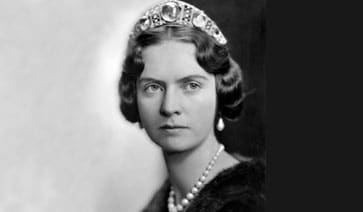
Sybille
Duchess of Västerbotten (1932)
2(Gotha, Germany, 18 January 1908 – Stockholm, Sweden, 28 November 1972)
In 1932, Princess Sybille (Sybille Calma Maria Alice Bathildis Feodora) married Prince Gustaf Adolf, the Hereditary Prince of Sweden. In 1947 he was killed in a plane crash, returning from a hunting trip and visit to Princess Juliana and Prince Bernhard of the Netherlands. He was second in line to the Swedish throne after his father, who became King in 1950. His son Carl Gustaf succeeded him and became King upon the death of his grandfather.
Princess Sybille of Saxe-Coburg and Gotha, Duchess of Saxony
Princess of Sweden (1932)
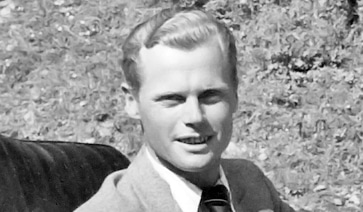
Hubertus
Heir apparent of Saxe-Coburg and Gotha (1932 – 1943)
3(Reinhardsbrunn Castle, Germany, 24 August 1909 – Mosty, (Poland), today Ukraine, 26 November 1943)
Hubertus (Dietmar Hubertus Friedrich Wilhelm Philipp) was the second son of the Duke and Duchess of Saxe-Coburg and Gotha and joined the German Army in World War II. In 1943 he was killed in action in Mosty, Ukraine.
Prince of Saxe-Coburg and Gotha, Duke of Saxony

Caroline Matilda
Princess of Saxe-Coburg and Gotha, Duchess of Saxony (till 1931)
4(Callenberg Castle, near Coburg, 22 June 1912 – Erlangen, Germany, 5 September 1983)
Princess Caroline Matilda (Caroline Matilda Helen Louise Augusta Beatrice) was married three times. Two of her (former) husbands were killed in plane accidents. She had seven children, four boys and three girls.
Countess of Castell-Rüdenhausen (until 1938)
Friedrich Josias, Prince of Saxe-Coburg and Gotha
Wedding of
Friedrich Josias, Prince of Saxe-Coburg and Gotha, Duke of Saxony &
Princess Viktoria-Luise of Saxe-Coburg and Gotha, Duchess of Saxony
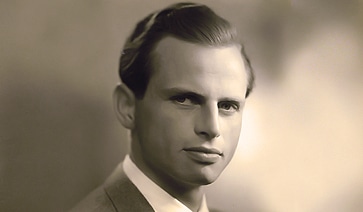
Friedrich Josias
Heir apparent of Saxe-Coburg and Gotha, Duke of Saxony (since 1943)
(Callenberg Castle, near Coburg, 29 November 1918 – Amstetten, Austria, 23 January 1998)
The third of three sons, Friedrich Josias (Friedrich Josias Carl Eduard Ernst Kyrill Harald) was not expected to succeed as head of the Ducal Family. However, his eldest brother, Hereditary Prince Johann Léopold, gave up his rights in 1932 because of his unequal marriage, and the second brother Prince Hubertus was killed in action in 1943, thus leaving Prince Friedrich Josias as the heir apparent. After the war, he spent a few years abroad, but came back to Europe at the request of his father, to work for the family foundations. He was responsible for the castles of Callenberg near Coburg and Greinburg in Austria. When his father died on 6 March 1954, Friedrich Josias succeeded to the Headship of the family. He preferred living in Austria most of the time. Upon his death the right to accommodation within the Veste Coburg expired.
Prince of Saxe-Coburg and Gotha, Duke of Saxony
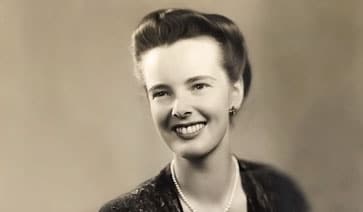
Viktoria-Luise
Viktoria-Luise Whitten
1(Casel manor, south of Berlin, 13 March 1921 – Louisiana, United States, 1 March 2003)
Countess Viktoria-Luise (Viktoria-Luise Friederike Karoline Mathilde) was born at Schloss Casel in Lower Lusatia south of Berlin. Her parents were Count Hans of Solms-Baruth and Princess Karoline Mathilde of Schleswig-Holstein-Sonderburg-Glücksburg. Her maternal grandparents were Friedrich Ferdinand, Duke of Schleswig-Holstein-Sonderburg-Glücksburg and Princess Karoline Mathilde of Schleswig-Holstein-Sonderburg-Augustenburg. Her marriage to Friedrich Josias, Prince of Saxe-Coburg and Gotha took place at Schloss Casel, where their only son Prince Andreas was born. After their divorce in 1946, the Princess moved to America with her second husband, Richard Whitten, bringing Prince Andreas and their daughter Victoria Astrid Solms Whitten.
Countess of Solms-Baruth
Princess of Saxe-Coburg and Gotha, Duchess of Saxony
Issue:
Andreas Prince of Saxe-Coburg and Gotha, Duke of Saxony
Victoria Astrid Solms Whitten
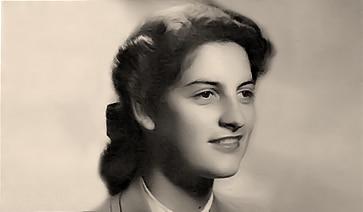
Denyse Henrietta
Princess of Saxe-Coburg and Gotha, Duchess of Saxony
2(Basel, 14 December 1923 – 25 April 2005)
Denyse Henrietta de Muralt came from an old Swiss family in Berne. She was governess to the children of Friedrich Josias’ sister Sybille, Princess of Sweden. During a visit at his sister’s, Friedrich Josias became acquainted with Denyse. As a result of their growing love, she left Sweden to go to San Francisco, where the couple married in 1948. They had three children. Friedrich Josias and Denyse were divorced in 1964.
Denyse Henrietta de Muralt
Issue:
Maria Claudia Princess of Saxe-Coburg and Gotha, Duchess of Saxony
Beatrice Princess of Saxe-Meiningen, Duchess of Saxony
Adrian Prince of Saxe-Coburg and Gotha, Duke of Saxony
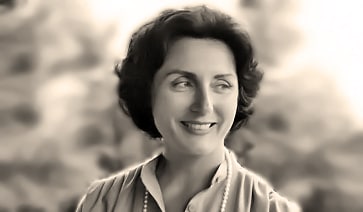
Katrin
Princess of Saxe-Coburg and Gotha, Duchess of Saxony
3(22 April 1940 – 13 July 2011)
In Hamburg on 30 October 1964, Friedrich Josias married his third wife, Katrin Bremme, morganatically. The marriage was childless.
Katrin Bremme

Andreas
Prince of Saxe-Coburg and Gotha, Duke of Saxony
1(Casel manor, south of Berlin, 21 March 1943)
Andreas (Andreas Michael Friedrich Hans Armin Siegfried Hubertus) has been the head of the House of Saxe-Coburg and Gotha since 1998. He is the grandson of Charles Edward, Duke of Saxe-Coburg and Gotha, the last ruling Duke. He is styled as His Highness. Prince Andreas was born at Schloss Casel in Lower Lusatia to Friedrich Josias, Prince of Saxe-Coburg and Gotha and the former Countess Viktoria-Luise of Solms-Baruth. His parents divorced in 1946. In 1949 he moved to the United States, where he spent most of his childhood with his mother, her second husband, Richard Whitten, and their daughter (Andreas’ half-sister).
Hereditary Prince of Saxe-Coburg and Gotha (till 1998)

Maria Claudia
Princess of Saxe-Coburg and Gotha, Duchess of Saxony
2(San Francisco, 22 May 1949 – Grabs, Switzerland, 5 Feb 2016)
In 1971, Maria (Maria Claudia Sybilla) married Gion Schäfer (b. 1945). They have two daughters: Maria Christina Sybilla Schäfer (b. 1972) and Gianetta Antonia Schäfer (b. 1975). The couple divorced in 1998. Maria currently lives in Chile.
Princess of Saxe-Coburg and Gotha, Duchess of Saxony

Beatrice
Princess of Saxe-Meiningen, Duchess of Saxony
3(Berne, 15 July 1951)
Beatrice Charlotte was born in Berne and married on June 12, 1977 to Prince Friedrich of Saxe-Meiningen (1935–2004). They have a son Friedrich Constantin and a daughter Maria-Alexandria.
Princess of Saxe-Coburg and Gotha, Duchess of Saxony

Adrian
Prince of Saxe-Coburg and Gotha, Duke of Saxony
4(Coburg, 18 October 1955 – Berne, 30 August 2011)
Adrian (Adrian Vinzenz Eduard) was born in Coburg in 1955 and died in Berne in 2011. His first marriage, a morganatic one, was to Lea Rinderknecht in Berne, Switzerland in 1984. Lea was born in Zürich in 1960. They had two sons, Simon (b. 1985) and Daniel, (b. 1988), both born in Berne. After Adrian’s divorce in 1993, he married a second time, also morganatically, to Gertrud Krieg in 1997 in Berne. Gertrud was also of Swiss origin as she was born in Olten, Solothurn. The couple was childless.
Andreas, Prince of Saxe-Coburg and Gotha, Duke of Saxony
Wedding of
Prince Andreas of Saxe-Coburg and Gotha, Duke of Saxony &
Princess Carin of Saxe-Coburg and Gotha, Duchess of Saxony
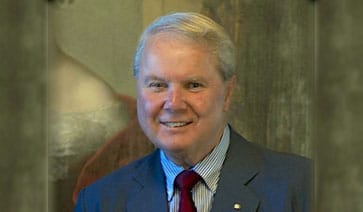
Andreas
Prince of Saxe-Coburg and Gotha, Duke of Saxony
(Casel manor, south of Berlin, 21 March 1943)
Andreas (Andreas Michael Friedrich Hans Armin Siegfried Hubertus) has been the head of the House of Saxe-Coburg and Gotha since 1998. He is the grandson of Charles Edward, Duke of Saxe-Coburg and Gotha, the last ruling Duke. He is styled as His Highness. Prince Andreas was born at Schloss Casel in Lower Lusatia to Friedrich Josias, Prince of Saxe-Coburg and Gotha and the former Countess Viktoria-Luise of Solms-Baruth. His parents divorced in 1946. In 1949 he moved to the United States, where he spent most of his childhood with his mother, her second husband, Richard Whitten, and their daughter (Andreas’ half-sister).
Hereditary Prince of Saxe-Coburg and Gotha, Duke of Saxony (until 1998)

Carin
Princess of Saxe-Coburg and Gotha, Duchess of Saxony (since 1971)
(Hamburg, 16 July 1946)
Carin Dabelstein was born in Hamburg and is the daughter of Adolf Wilhelm Martin Dabelstein and his wife Irma Maria Margarete Callsen. Although the marriage is not equal, it is not considered morganatic because it was authorized by Andreas’ father. The couple has three children.
Carin Dabelstein

Hubertus Michael
Hereditary Prince of Saxe-Coburg and Gotha, Duke of Saxony
2(Hamburg, 16 September 1975)
Hubertus Michael was born in Hamburg on September 16, 1975. He is heir apparent to the headship of the ducal house. After his studies of Law in Wurzburg, he attended London School of Economics for one year and finished his studies after two more years in Munich with the final state examination. Then he worked for five years as an investment banker at the Deutsche Bank in New York, where he met his wife Kelly-Jean Rondestvedt.
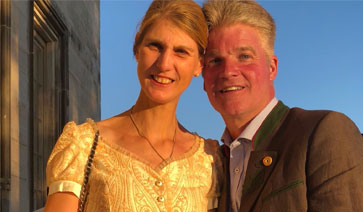
Stephanie
Princess of Saxe-Coburg and Gotha, Duchess of Saxony
1(Hamburg, 31 January 1972)
Stephanie Sybilla was born in Hamburg on 31 January 1972. After her apprenticeship in business administration at Messrs. Dahle in Coburg, she underwent training as a therapist in Bowen. She currently works for the family foundation in Coburg. Stephanie was married on 05.07.2018 to Dr Jan Stahl, born in Kiel on January the 9th 1968.

Alexander
Prince of Saxe-Coburg and Gotha, Duke of Saxony
3(Coburg, 4 May 1977)
Alexander Philip was born on May 4, 1977 and was trained as a forester in the Callenberg Forests. Since 1991 he has worked for the forestry administration of the Greinburg properties for the family foundation in Austria.
Hubertus, Hereditary Prince of Saxe-Coburg and Gotha, Duke of Saxony
Wedding of Hereditary Prince Hubertus of Saxe-Coburg and Gotha and Hereditary Princess Kelly of Saxe-Coburg and Gotha
May 2009 (Photo by Stig S. Nielsen)

Hubertus Michael
Hereditary Prince of Saxe-Coburg and Gotha, Duke of Saxony
(Hamburg, 16 September 1975)
Hubertus Michael was born in Hamburg on September 16, 1975. He is heir apparent to the headship of the ducal house. After his studies of Law in Wurzburg, he attended London School of Economics for one year and finished his studies after two more years in Munich with the final state examination. Then he worked for five years as an investment banker at the Deutsche Bank in New York, where he met his wife Kelly-Jean Rondestvedt.

Kelly
Princess of Saxe-Coburg and Gotha, Duchess of Saxony (since 2009)
(Pensacola, Florida, United States, 10 January 1975)
Kelly-Jean was born on January 10, 1975 in Pensacola, Escambia County, Florida and worked as an investment banker at Morgan-Stanley in New York after her studies at the University of California. She married Hubertus Prince of Saxe-Coburg and Gotha in Coburg in May 2009. Kelly gave birth to their daughter, Katharina in April 2014. They currently reside in Coburg.
Kelly Rondestvedt

Katharina
Princess of Saxe-Coburg and Gotha, Duchess of Saxony
(Munich, Germany, 30 April 2014)
Katharina Victoria Elizabeth Cheryl is the first daughter of Hubertus and Kelly.

Phillipp
Prince of Saxe-Coburg and Gotha, Duke of Saxony
(Munich, Germany, 15 July 2015)
Philipp Hubertus Andreas Christian is the first son of Hubertus and Kelly.

Madeleine
Princess of Saxe-Coburg and Gotha, Duchess of Saxony
(Munich, Germany, 22 February 2017)
Madeleine Aurelia Victoria Carin is the second daughter and third child of Hubertus and Kelly.


